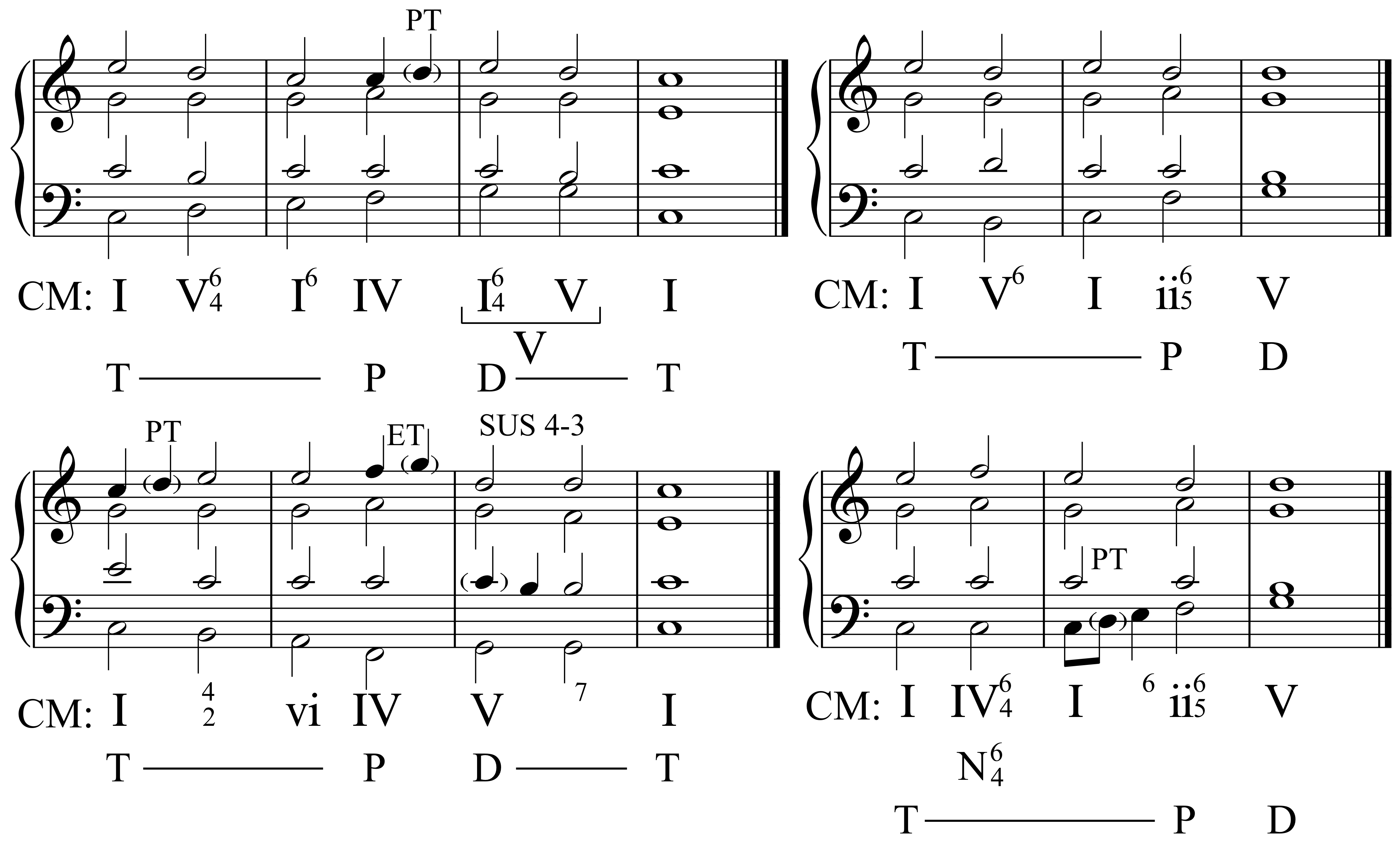In classical tonal music, composers use chords in particular ways depending on the style at hand: they happen at certain times and are preceded and followed by specific chords. These particular uses let us create groups of identifiable functions: Tonic, Dominant, and Predominant.
Theorists named these functions using the same terms we use for scale degree names, but here they are more general and apply to multiple chords.
The idea of function is an early topic where metaphors of motion and tension invade our jargon. Functions are something we feel in music. Rather than just labeling a moment in music, we use functions words to show how music is a dynamic force and affects our emotions.
Tonic Function (T)
The tonic function is the point of repose and stability in our musical landscape. We start and end music with tonic. The other functions are places along the way urging us to return to a stable, calm moment. Ending on tonic gives us a feeling of concluson. Of course, these are silly metaphors, but they get the idea across. Chords with tonic function include the tonic triad (I and i) and sometimes iii and vi (III and VI), depending on the circumstances.
Dominant Function (D)
The dominant function, on the other hand, creates tension and motion. We feel the need for these moments to resolve, to lessen, to return to tonic and end our torment. The resolution of dominant to tonic creates sighs of relief. A dominant pedal, prolonging the dominant, makes us feel uneasy, and helps build even more tension. If we stop on a dominant, like at a half cadence, this creates a sense of expectation that the music will continue. Chords with dominant function include V and vii°.
Predominant Function (P)
The predominant function (also called subdominant) bridges the gap between tonic and dominant. It is a place along the way, creating more variety and interest in the music. The predominant function is optional. A long section of music with just tonic and dominant works just fine and sounds great. But predominant chords help us keep our music spicy and can drive us toward an important dominant (as with altered harmonies like the Neapolitan and augmented sixth chords). Chords with predominant function include IV and ii (iv and ii°), and sometimes vi (VI). Enjoying all the metaphors?
The Phrase Model
The standard phrase model uses at least three harmonies: T-D-T. This is a complete thought in classical tonal music. If we remove the final T, we have an inconclusive phrase that requires more music: T-D.

We can add the optional P between any T and D to extend our phrase and create some variety.

Prolongation
We can make any of these phrases longer by adding inversions as well as multiple chords for any function. These techniques prolong the specific functions, so we say that vi is a tonic prolongation below.

I have added horizontal lines to show the prolongations visually.
We can also prolong functions with other chords stuck inbetween the same function. These other chords are usually described as linear and nonfunctional. They are linear, in that they follow from the movement of the voices, but do not define their own function based on their placement in the music. The following example displays some different prolongations.

Substitution
We can also replace a standard chord rather than add one. The main example of this substitution is the deceptive progression: V–vi. We call the vi chord here a tonic substitute. This chord comes as a shock requiring, in classical music, a rebound backward to try and finish the phrase again.

List of Functional Possibilities
- I: Tonic, Dominant Prolongation (as six-four chord)
- ii: Predominant
- iii: Tonic Prolongation
- IV: Predominant, Tonic Prolongation (as six-four chord)
- V: Dominant, Tonic or Predominant Prolongation (in inversions)
- vi: Tonic Prolongation, Predominant, Tonic Substitute
- vii°: Dominant, Tonic Prolongation